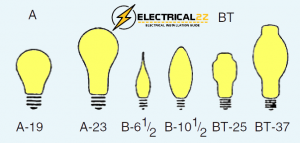Table of Contents
What is a Dimmer?
LED and Smart Dimmers | To make maximum use of available light, it is necessary to control it. Light may be controlled by turning lights on and off, either manually or with time clocks or photoelectric switches, and by controlling the level of illumination in a given area with dimmers and similar devices.
Types and Uses of LED and Smart Dimmers
Solid-state circuitry dimmer switches for incandescent lighting adjust lights from bright to candle-glow without causing a flicker. In some dimmers, a knob is turned to switch on the light and then rotated until the brightness level desired is reached. Turning on a light with such a dimmer involves rotating the knob back and clicking the switch on. In other types of dimmers, the knob is pushed in to turn the lights on, and then the knob is rotated to the brightness level desired. The lights are turned off by pushing in on the knob. Push the knob again to turn the lights back on at the exact brightness level that was set when it was turned on.
This type of dimmer has to have a filter to prevent problems with television and radio reception within the house, especially if they are all on the same circuit. The 1000-, 1500-, and 2000-watt models of incandescent dimmers have break-off fins that permit close ganging of the switches, using minimum wall space. The 1500- and 2000-watt models have mounting holes for two-gang boxes.
Light control equipment comes in all sizes. Commercial-size units are usually transformers, and in some cases, such as stage lighting, saturable reactors are used. These reactors use a low-voltage DC to control the saturation level of the core of a transformer that, in turn, decreases or increases the available current from the secondary winding of the transformer that supplies the lights.
In most cases, a wall-mounted controller, mounted in a standard 4-inch wall box, is a continuously adjustable transformer. The rotating knob of the dimmer produces any light intensity from full bright to off or any level in between. It is a smooth, flickerless, stepless control process, suitable for either incandescent or 40-watt rapid-start fluorescent lamps.
Most newer models of dimmers are made with radio frequency interference (RFI) suppression to make sure that the dimmer does not interfere with the operation of a radio or television or any other electronic device on the same circuit or in the building. Triacs are made that can handle up to 4000 amperes. The high currents are controlled or triggered by diacs that are in turn controlled by low voltage.
Motor-driven units, composed of electronic circuits with RFI suppression, permit remote control. The dimmer can be installed in an out-of-the-way spot and the control station (knob) at a convenient location. Dimmers are also available for use with fluorescent lamps. However, inasmuch as fluorescent lamps usually need about 100 volts to produce light, it is rare that anyone needs to dim them.
The electronic dimmers for fluorescent lamps that are now available permit gradual control of the entire dimming range from full intensity to completely off. The dimmer can be mounted in a standard double-gang sectional switch box with a depth of at least 21/2 inches. The dimmer comes with pigtails. When ganging dimmers horizontally, a single gang box is placed between double-gang boxes.
De-rating is not required when specifier series dimmers are ganged. Some dimmers handle from four to twenty 40-watt lamps; others will handle from four to forty 40-watt lamps, or 16.66 amperes.
 |
| Dimmer Switch @Smart Dimmers |
Smart Dimmers
Lights can be dimmed to vary light intensity in a room and to use the effect as part of a decorating scheme. Bright bathroom lights can be dimmed so that they are not such a problem at 3 a.m. Lights can be dimmed in the children’s bedrooms to calm them and make it safer to go into the room when they are asleep without tripping over something. Bright lights are not exactly necessary when you are watching television, so the dimmer can be used to keep the room comfortable for viewing.
Dining rooms can be made more suitable for dining, with dimmers used to create a relaxed and calm feeling rather than eat-and-run atmosphere. Dimmers are used to soften lights for reading, talking, and enjoying romance in the bedroom. The high-tech dimmer is a little more sophisticated than the variable resistor type. A microprocessor is used to keep the light level where you want it. Some have a 10-second delay, and dynamic light-emitting diodes (LEDs). By adding a smart remote, yon can dim the lights from two locations.
Replace one switch with a smart dimmer and replace the other switch in a three-way installation with a smart remote. You can use up to nine smart remotes with one smart dimmer.
Photoelectric Switches
Lighting can also be controlled by using photoelectric switches that detect the available sunlight and turn lamps on and off accordingly. There are many different types of photoelectric controls available some to control indoor lighting and some to control outdoor lighting. They differ also in the sunlight level, measured in foot-candles, required to trigger lamp turn-on.
Time Clocks
Time clocks can also be used to turn lights on and off. Time clocks can be obtained with a number of features. Some can be set to turn lights on and off at certain times each day; others permit longer or shorter operation periods for each individual day of the week as well as the possibility of omitting any day.
This feature is necessary in many commercial lighting operations such as stores and shopping centers, where working hours vary from day to day. In general, time clocks that can handle up to 40 amperes per contact in SPST, DPDT, 3PST, and SPDT configurations are available.
Final Word
Hope you understand this article about Types and Uses of LED and Smart Dimmers. Incase of any doubt please comment below. Subscribe our website to get every new post update to your email. Please follow our website – ElectricianWorld.Net for future updates. Thank you for visiting our website.



